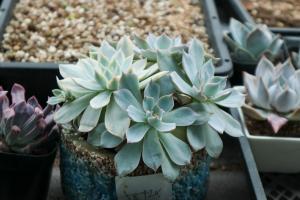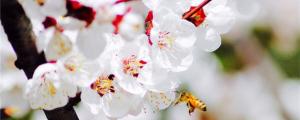How to Protect Newly Planted Fruit Trees from Frost
Protecting newly planted fruit trees from frost is crucial to ensure their survival and growth. Frost can damage the buds, flowers, and young leaves, leading to reduced fruit yield or even the death of the tree. In this article, we will discuss some effective ways to protect your newly planted fruit trees from frost.
Location and Planting Time
One of the best ways to protect your fruit trees from frost is to choose a location with good air drainage. Cold air tends to settle in low areas, so planting your tree on a higher slope or a mound can reduce the risk of frost damage. Additionally, consider planting your tree in the late spring or early fall when the risk of frost is lower.
Watering Strategy
The right watering strategy can help protect your fruit trees from frost damage. Wet soil retains more heat than dry soil, which can protect the roots of your tree from damaging frost. Water your tree deeply and infrequently, preferably during the daytime, to allow the soil to absorb enough water to provide adequate insulation at night.
Mulch and Compost
Mulch and compost can help insulate the soil and protect the roots of your newly planted fruit trees from frost damage. Apply a 2- to 4-inch layer of organic mulch such as bark, leaves, or straw around the base of your tree. Additionally, mix compost into the soil to provide your tree with the necessary nutrients and to help retain moisture.
Covering and Wrapping
Covering your newly planted fruit trees with blankets, tarps, or frost cloth can provide additional protection from frost damage. Ensure that the cover extends all the way to the ground and is securely anchored to prevent any cold air from penetrating. Likewise, wrapping your tree trunk with insulating materials like burlap or bubble wrap can help prevent damage.
Using Heat Sources
You can use heat sources like heaters or string lights to keep your fruit trees warm during frosty nights. Place the heat source underneath the cover but avoid placing it too close to the tree to prevent overheating or fire hazards. However, be careful when using heat sources and always follow the manufacturer's instructions to ensure safety.
In conclusion, protecting your newly planted fruit trees from frost damage is critical for their growth and survival. By choosing a good location, using the right watering strategy, applying organic mulch and compost, covering and wrapping your tree, and utilizing heat sources, you can significantly reduce the risk of frost damage and increase your tree's chances of thriving. Remember to plan ahead and prepare for frost events to avoid any unpleasant surprises.

 how many times do yo...
how many times do yo... how many planted tre...
how many planted tre... how many pine trees ...
how many pine trees ... how many pecan trees...
how many pecan trees... how many plants comp...
how many plants comp... how many plants can ...
how many plants can ... how many plants and ...
how many plants and ... how many pepper plan...
how many pepper plan...































